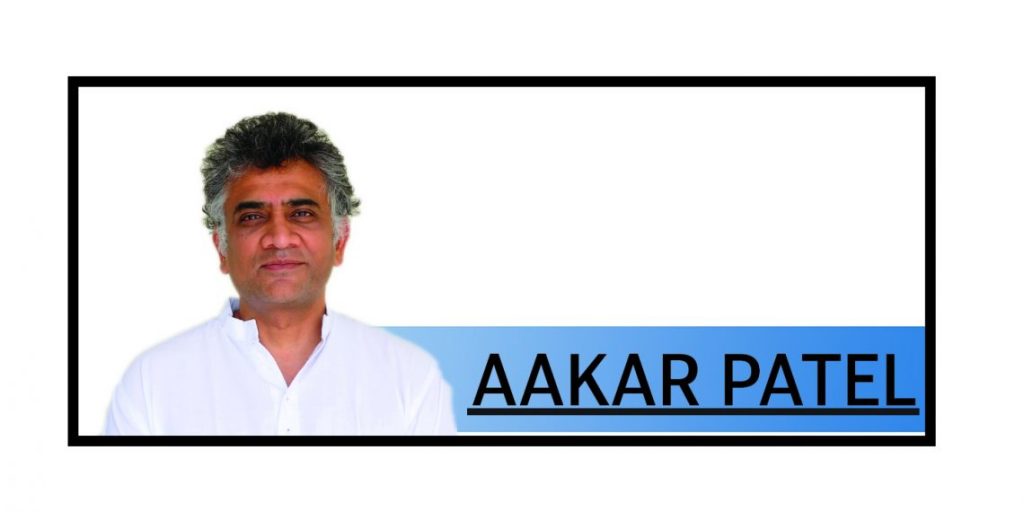Aakar Patel
We have entered the third year of this government and in the months to come the discussion will turn to the election of 2024. Some of the recent political activity around Uttar Pradesh is being seen in this light. In India what the government does is left generally to the political parties, especially by the middle class which, once it has voted, does not engage with the state. But there is a part of our country which does engage and does not remain aloof.
The term civil society refers, according to the World Health Organisation, to a wide array of organisations: community groups, non-governmental organisations (NGOs), labour unions, indigenous groups, charitable organisations, faith-based organisations, professional associations, and foundations.”
In India we usually use the term civil society almost exclusively for NGOs and activists, because professional associations are quite afraid of confronting the government. There are exceptions but these are few. It is the NGOs, activists and indigenous groups who represent the people and their interests outside the framework of politics. In India when we say indigenous groups we mean Adivasis. The model of development India has adopted is to extract from Adivasi lands the resources that are used for the rest of the country. You and I do not get displaced by the government from our homes. It is the Adivasi who must leave her place her ancestors have lived on for thousands of years because we need to build a dam or because we have found coal underneath.
Adivasis have protested against India’s government for over a century. The rebellion of Birsa Munda, the man whose statue Amit Shah once wanted to garland (but he wrongly garlanded someone else’s) forced the British to introduce the Chotanagpur Tenancy Act, which banned the transfer of Adivasi land to non-Adivasis. The BJP wanted to garland Munda but it also passed a law to undo the Chotanagpur Tenancy Act in 2016. This produced such a backlash from the Adivasis that the BJP retreated from the law and was defeated in the next state election. This is why Shah was garlanding what he thought was Munda’s statue in 2020.
Adivasi resistance to the Indian state is not understood and it is not widely covered in the media. This month has seen at least two places where Adivasis have been on protest. In Gujarat 11 Adivasis were arrested for protesting against a proposed parking lot near the Statue of Unity. They said the land acquired by the Sardar Sarovar Narmada Nigam for the development project belonged to them and had been taken illegally. The strength of the emotion can be understood by knowing that the women among them removed their clothes in public. An FIR was filed against 20 of them under sections including 143 (unlawful assembly) and 294 (singing obscene song, ballad or words near a public place). In Chhattisgarh, which has a Congress government, thousands of Adivasis have been on protest against a Central Reserve Police Force camp erected on their lands without their permission. The government opened fire on them, killing three, but the Adivasis are still there in the open in Bastar, demanding their rights and insisting that the camp be removed.
On the outskirts of Delhi, tens of thousands of farmers remain on protest, having gathered in November and spent the entire winter and now the summer in the open along the highway. The laws that they are protesting against were passed without a division vote in the Rajya Sabha. The laws have been suspended indefinitely by the Supreme Court and the Modi government itself has offered to suspend them for 18 months. There is extreme disaffection against the laws including by groups supporting the BJP in Uttar Pradesh and it is unlikely that the laws will ever be implemented. The Modi government itself has lost interest in them and does not speak about their implementation. But it has allowed the protests to continue because it does not want to be seen as retreating, though it appears to have already retreated. Similarly, though the CAA law was passed by the Parliament more than a year and a half ago, it has not been implemented. One reason is the protests against it in India, the other is the widespread condemnation against it globally including in the European Parliament.
Civil society action in Gujarat has resulted in the setting up of fast track courts to hear atrocities against Dalits and Adivasis. This came after the protest against the assault on Dalits in Una over a cow’s carcass. The civil society action was led by a former journalist, Jignesh Mewani, who was then elected into the Gujarat Assembly.
A lot of action has taken place in civil society since 2014. A weakening of the government, meaning a Centre with no party in a single majority, or a change in government will give civil society additional leverage. Laws that are unacceptable to civil society groups will not be easy to pass and implement. And laws that are in outright violation of international human rights standards will come under pressure to be repealed. It is a most interesting time leading up to 2024.
